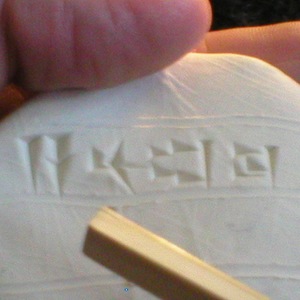Looks like Kevin is the one who got the ball rolling on this meme. DanielandTonya, while kindly stopping by to see my “Five Books or Scholars” post, invited my response to this one. [Whups: also tagged by Adam.] I like the idea, I just wish it were easier to narrow things down. As before, Duane’s Caveat applies: this is the list you get today. Ask me tomorrow, you’ll likely get a whole different list (like one with Sinuhe in it!).
Ugaritic Baʿlu cycle (with Bryan): the characterization and activity of Baʿl and ʾEl just wonderfully illuminate many (most?) of the ways that the God of Israel is represented throughout the Hebrew Bible in his several hats (warrior, fertility god, judge, lawgiver, king, god of the father). What is more, the several conflicts of the monarchic period—temple or tent; dynastic succession or prophetic legitimation; centralized authority or local control—all are better understood in the light of this material.
Zakkur and Mesha inscriptions: yeah, I’m cheating by lumping some favorites into pairs. I put these together because they both show in Israel’s neighbors the belief that the king or people has a special relationship with the god, and that the god intervenes decisively in history on behalf of the king or people. The devotee of Baalshamayn and Chemosh, as much as that of YHWH, experiences the protective love of the god for the god’s own people.
Hammurapi: both for the prologue and the laws. I love how the prologue illuminates elements of the royal theology: that the god takes the king by the hand, and the human king imitates the divine king by protecting the weak from the strong, the poor from the rich. (You also get this about Marduk in Enuma Elish, right?) And of course the laws continue to raise excellent questions about the genre of the biblical law codes, particularly about their setting and function.
Jubilees, 1 Enoch 1–36: overlap with Jim here. Who can help but love these early co-readers of the Bible? Like us, they read with care the details of the biblical text at hand (like Gen 5:24; or Gen 6:1-4; or Gen 22), and like us, they found themselves saying, “Now, what the…?”
Kuntillet Ajrud and Khirbet el-Qom: again I’m with Bryan here. Whether Asherah is imagined as a consort of YHWH or no, the symbol is associated with eighth-century goddess worship that likely descends contiguously from that known from earlier iconography.
Have you not yet been tagged on this meme? You have now.
ty7bd86mwa
